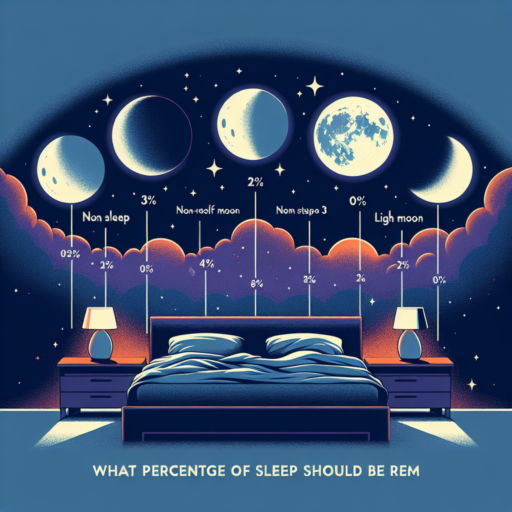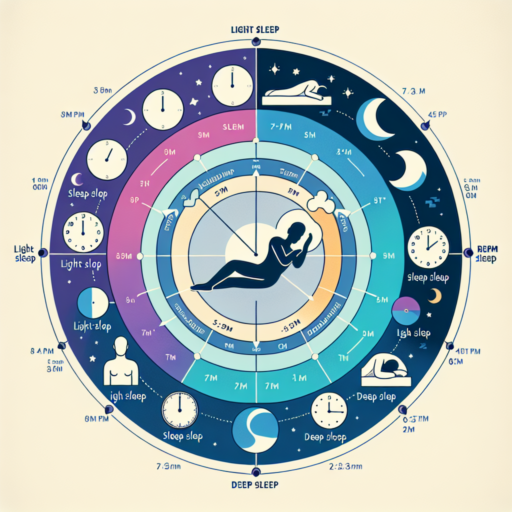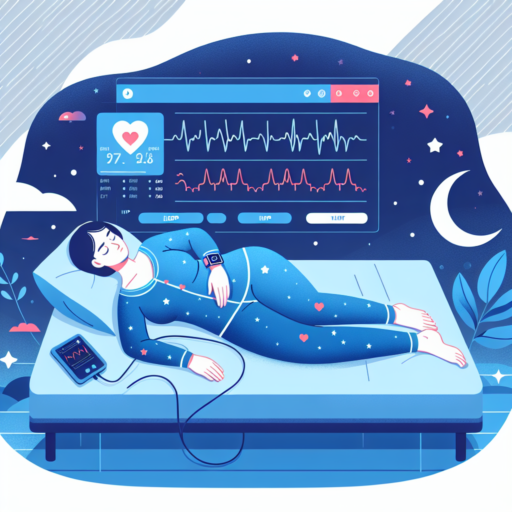What is a good percentage of REM and deep sleep?
Understanding the correct percentage of REM (Rapid Eye Movement) and deep sleep within your sleep cycle is crucial for maximizing restorative sleep and overall health. REM sleep, known for its association with dreaming, is vital for cognitive functions such as memory and learning. Deep sleep, or slow-wave sleep, is equally important as it aids physical recovery, growth and development, and boosts immune system efficiency. Both stages play a critical role in a balanced sleep cycle, yet their ideal percentages can differ from person to person.
Typically, a good percentage of REM sleep falls between 20% to 25% of your total sleep. This phase occurs in cycles throughout the night, becoming longer with each cycle. It is during the REM stage that the brain processes emotions, consolidates memories, and rejuvenates itself for the next day. On the other hand, deep sleep should account for approximately 13% to 23% of your nightly rest. This stage is most prominent during the first half of the night, diminishing in duration with each sleep cycle.
Factors such as age, lifestyle, and overall health can influence these percentages, making it essential to understand your body’s unique needs. For instance, younger individuals often require more deep sleep for developmental reasons, whereas adults might benefit from a stable balance between all sleep stages. Listening to your body, maintaining a consistent sleep schedule, and ensuring a comfortable sleeping environment can help optimize your REM and deep sleep percentages for better health and well-being.
Is 30% REM sleep too much?
Understanding the intricacies of REM (Rapid Eye Movement) sleep is crucial in analyzing sleep health and efficiency. While REM sleep is essential for cognitive functions such as memory consolidation and mood regulation, the debate on the optimal percentage of REM sleep gates much attention.
Defining Normal REM Sleep Patterns
Typically, REM sleep constitutes about 20% to 25% of an adult’s sleep cycle, with each sleep cycle lasting about 90 to 120 minutes and repeating throughout the night. Historically, achieving too much or too little REM sleep has been linked to various sleep disorders and cognitive impairments. Thus, hovering around the 30% threshold can signal a deviation from normal sleep patterns, potentially indicating underlying health issues or the need for a lifestyle adjustment.
Implications of Excessive REM Sleep
Excessive REM sleep, particularly levels exceeding 30%, may be symptomatic of several conditions, including depression, anxiety, and stress. It’s also essential to consider other factors such as sleep quality, duration, and individual health conditions that can influence the proportion of REM sleep. While research continues to explore the exact impact of elevated REM sleep, the correlation between extended REM periods and certain psychological conditions cannot be overlooked.
In the realm of sleep science, defining what constitutes «too much» REM sleep requires a nuanced understanding of each individual’s sleep health and lifestyle factors.
No se han encontrado productos.
What does a healthy sleep cycle look like?
Understanding the anatomy of a healthy sleep cycle is crucial for optimizing our overall well-being. At its core, a healthy sleep cycle consists of several stages, each serving a unique function in the process of rest and recovery. Knowing what each stage entails can help us make informed decisions about our sleep habits.
Stage One: Light Sleep – This initial phase is where you begin to drift off, and your body starts to slow down. It’s a transitional period that eases you into sleep but doesn’t offer the deep restorative benefits of later stages. Light sleep prepares the body for deeper sleep, making it an essential part of the sleep cycle.
Stage Two: Deeper Sleep – During this stage, your body enters a more profound and restorative level of sleep. Your heart rate slows, and your body temperature drops, signaling to your body that it’s time to start the healing and rebuilding process. Most of your nightly sleep is spent in this stage, underscoring its importance in the cycle.
Stage Three: REM Sleep – REM, or Rapid Eye Movement sleep, is the deepest sleep stage. It’s during REM that the brain processes emotions, memories, and information from the day. This stage is critical for cognitive functions like learning, memory retention, and emotional regulation. Achieving sufficient REM sleep is a hallmark of a healthy sleep cycle.
What’s better, sleep REM or deep?
When discussing the benefits of sleep, two critical phases often come into focus: REM (Rapid Eye Movement) and deep sleep. Both play pivotal roles in our health and well-being, but understanding the nuances of each can shed light on their individual importance. This exploration into REM and deep sleep aims to highlight their distinct functions and why they’re both essential components of a good night’s rest.
Understanding REM Sleep
REM sleep is most famous for its role in dreaming. It’s during this stage that the brain is almost as active as when you’re awake, processing emotions, consolidating memories, and facilitating learning. What makes REM sleep particularly fascinating is its contribution to mental health; it helps regulate mood and supports cognitive functions. This critical phase cycles roughly every 90 minutes, becoming longer towards the morning, suggesting its integral role in preparing your mind for the day ahead.
Deep Sleep Benefits
Deep sleep, or slow-wave sleep, is the phase of restorative rest. It’s here that the body repairs muscles and tissues, stimulates growth and development, boosts immune function, and energizes the body for the next day. During deep sleep, the brain waves slow down significantly, allowing for a state of profound relaxation and renewal. This phase is crucial for physical health, aiding in everything from weight management to reducing the risk of chronic disease.
Both REM and deep sleep contribute uniquely to our overall health, highlighting the complexity of sleep. While REM sleep is indispensable for mental and emotional recovery, deep sleep plays a fundamental role in physical health and renewal. Together, they form the cornerstone of a restorative sleep cycle, emphasizing the need for a balanced sleep schedule that promotes both REM and deep sleep stages.




